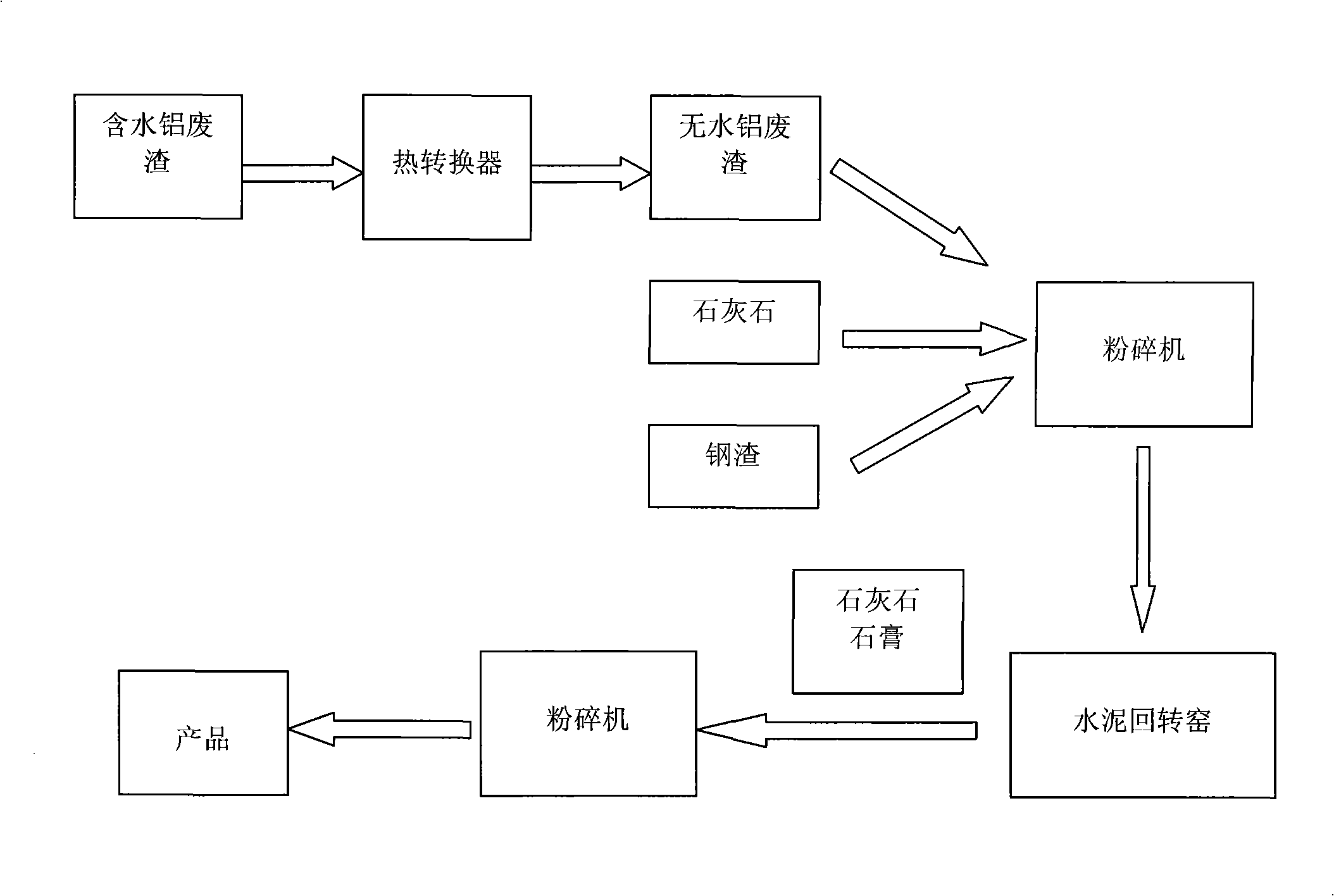Low-calcium silicate cement produced by using waste slag of aluminum and method of producing the same
A calcium silicate and aluminum waste slag technology, applied in cement production, clinker production and other directions, can solve the problem of high energy consumption in small and medium-sized cement enterprises, and achieve the effects of small one-time investment, low energy consumption and high mechanical strength
- Summary
- Abstract
- Description
- Claims
- Application Information
AI Technical Summary
Problems solved by technology
Method used
Image
Examples
Embodiment 1
[0021] Put the aluminum waste slag into the heat exchanger, use the tail gas produced by the cement plant to heat and dry for 30 minutes to remove the contained water. Contain 82.5% limestone (calcium carbonate content 75%), 8.9% anhydrous aluminum profile waste slag, 10.6% steel mill steel slag mass ratio to prepare raw meal according to raw meal, add it to pulverizer. Crush to 200 mesh. The resulting powdery raw meal is then added to a cement rotary kiln and fired at a temperature of 1450° C. for 20 minutes. Add 3.1% gypsum and 1% calcium carbonate to the fired clinker, then add it into a ball mill, and ball mill it to 250 mesh. You can get the product.
Embodiment 2
[0023] Put the aluminum waste slag into the heat exchanger, use the tail gas produced by the cement plant to heat and dry for 40 minutes to remove the contained water. The raw meal is prepared according to the mass ratio of 70% medium-grade limestone (calcium carbonate content 75%), 9.0% anhydrous aluminum waste slag, and 21% steel plant slag in the raw meal, and is added to the pulverizer. Crush to 200 mesh. The resulting powdery raw meal is then added to a cement rotary kiln and fired at a temperature of 1350° C. for 45 minutes. Add 4.5% gypsum and 1.5% calcium carbonate to the fired clinker, then add it into a ball mill, and ball mill it to 250 mesh. You can get the product.
Embodiment 3
[0025] Put the aluminum waste slag into the heat exchanger, use the tail gas produced by the cement plant to heat and dry for 50 minutes to remove the contained water. The raw meal is prepared according to the mass ratio of 70% medium-grade limestone (calcium carbonate content 75%), 9.0% anhydrous aluminum waste slag, and 21% steel plant slag in the raw meal, and is added to the pulverizer. Crush to 200 mesh. The resulting powdery raw meal is then added to a cement rotary kiln and fired at a temperature of 860° C. for 150 minutes. Add 4.5% gypsum and 3% calcium carbonate to the fired clinker, then add it into a ball mill, and ball mill it to 250 mesh. get the product
PUM
 Login to View More
Login to View More Abstract
Description
Claims
Application Information
 Login to View More
Login to View More - R&D
- Intellectual Property
- Life Sciences
- Materials
- Tech Scout
- Unparalleled Data Quality
- Higher Quality Content
- 60% Fewer Hallucinations
Browse by: Latest US Patents, China's latest patents, Technical Efficacy Thesaurus, Application Domain, Technology Topic, Popular Technical Reports.
© 2025 PatSnap. All rights reserved.Legal|Privacy policy|Modern Slavery Act Transparency Statement|Sitemap|About US| Contact US: help@patsnap.com

